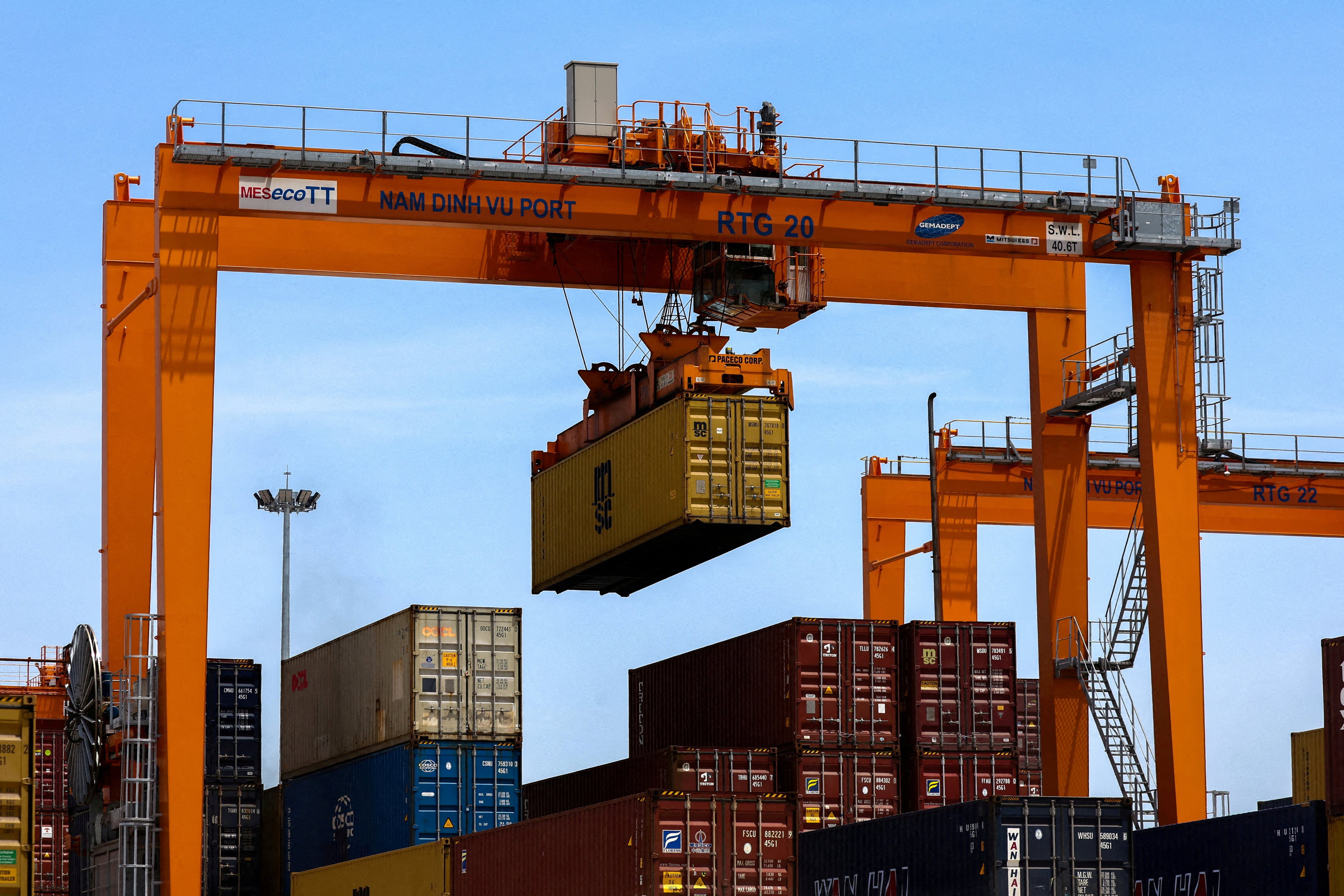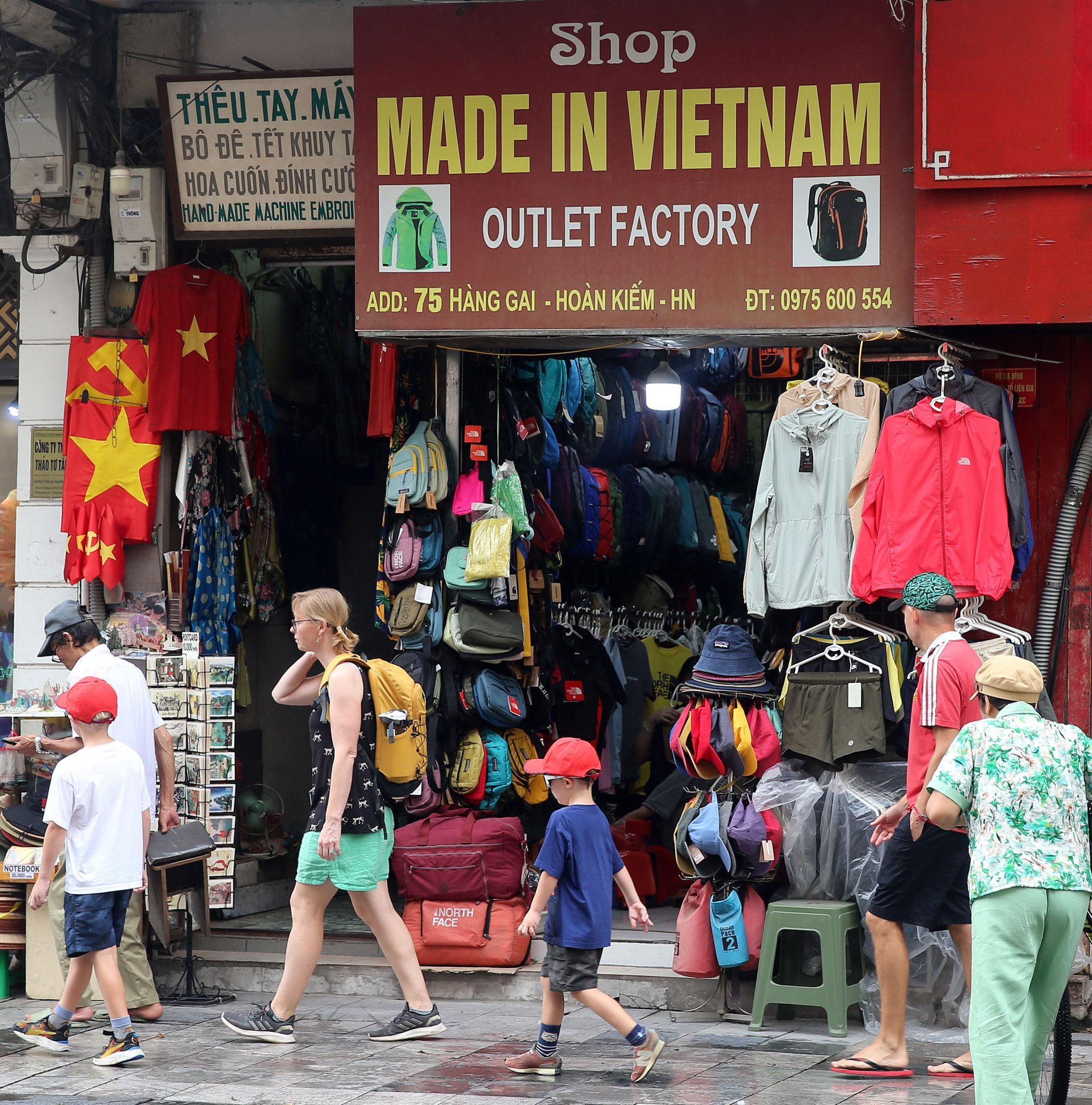Vietnam breathes sigh of relief after Trump trade deal, but challenges remain
Under the new deal, US goods into Vietnam will not be taxed while Vietnamese exports will face a 20 per cent US tariff

Vietnam breathed a sigh of relief when US President Donald Trump announced a trade deal had been struck between Hanoi and Washington. The Vietnam Stock Index reached its highest level since April 2022, indicating confidence that export stability had been achieved.
On the face of it, the deal is highly unbalanced, with US exports to Vietnam enjoying tariff-free market access, while Vietnamese exports in the other direction now face a 20 per cent rate, slightly over twice last year’s average rate of 9.4 per cent.
The rationale for the skewed maths, according to supporters of the Trump administration’s “America-first” trade policy, is that such measures are necessary to balance US-Vietnamese trade. Hanoi currently enjoys a surplus in excess of US$100 billion.
Furthermore, the new rate is vastly lower than the 46 per cent that Trump unveiled in April against Vietnamese goods.
Augustine Ha Ton Vinh, a Vietnamese-American businessman and economic development strategist in Hanoi who formerly worked in the Reagan administration, said that Vietnam could live with the new tariff rate.
“With the 20 per cent rate, it is the level that the Vietnamese economy can bear, but if the US imposes a tax rate of more than 25 per cent, the Vietnamese economy will be in crisis,” said Vinh, who campaigned for Trump last year.
The new tariffs would be difficult but not insurmountable, said Ngo Minh Duc, founder of LCTV Financial Investment Joint Stock Company in Hanoi.
“The trade agreement between the US and Vietnam will be a big challenge for Vietnam, but at the same time, it will open up many opportunities for Vietnamese goods,” he said.

Popular sentiment was largely in favour of the deal. “Today I see that public opinion has also received it positively,” said Le Dang Doanh, a retired economic adviser to five prime ministers.
“I believe that the Vietnamese government really wants to find a lower tax rate, but in the current situation, reaching an agreement like this to continue production and continue investing in the United States is better than not having such an agreement.”
The deal would also allow Washington and Hanoi to carry on with their strategic partnership, said Ian Storey, a senior fellow at the Institute of Southeast Asian Studies in Singapore.
“The trade deal puts US-Vietnam relations back on track, including bilateral defence ties,” Storey said, adding that there might be an increase in Vietnamese weapons purchases from the US in the aftermath of the trade deal.
Transshipment tariffs
The deal also has a more controversial provision that imposes a 40 per cent tax on goods that are transshipped to the US from a third country via Vietnam, with the measure specifically aimed at China.
While the extent to which China uses Vietnam as a transshipment point to avoid US tariffs is unclear, Vietnam has long been considered the beneficiary of the tariffs first slapped on China during the first Trump administration and maintained through Joe Biden’s presidency.
Vietnam’s trade surplus with the US increased from around US$39.5 billion in 2018, the year that the trade war began in earnest, to a record US$123.5 billion last year, according to American government statistics.
Peter Navarro, Trump’s senior adviser on trade and manufacturing, said in April that around a third of Vietnamese exports were actually Chinese goods diverted through the Southeast Asian nation.
The scope of the transshipment clause is unknown, with the ambiguity concerning how much value Vietnamese firms have to add to a given good before they can be considered exempt from the 40 per cent rate.
“Many enterprises only do the job of getting goods from the border gate on the other side of the Chinese border, then bringing them to Vietnam, relabelling, and then exporting, which is unacceptable,” explained Vinh, the Vietnam-born American businessman.
Duc, the investment adviser in Hanoi, said the new rules might also hit assembly-oriented industries in Vietnam, which tend to import their materials from China.
“The biggest impact on Vietnam’s assembly industries is that Vietnam only plays a processing role in the products of this industry and does not contribute much to the value chain of this industry,” he said.
Doanh, the retired economic adviser, agreed, adding that the new rate might endanger foreign investment projects that had integrated Vietnam into their Chinese supply chains.
“Many foreign-invested enterprises invest in production in Vietnam but import spare parts and materials from China, and the 40 per cent tax rate on transshipment goods will be a pressure on these enterprises,” he said.
This is not necessarily a bad thing for the Vietnamese economy, however. Foreign investors with vertical integration across the Chinese border, said Doanh, might intensify reshoring to Vietnam to benefit from the cheaper tariff, especially if Chinese-US trade relations remained volatile.
While the current US tariff regime against Chinese goods is complex, the Washington-based Peterson Institute for International Economics calculated that the average rate is now 51.1 per cent.
For example, “Samsung has a phone factory in Thai Nguyen province, but they also have to import [some] spare parts … from Samsung’s operating businesses in China,” Doanh said. So the company might want to reshore some of its production to Vietnam to escape the higher rate.

Rebalancing trade
While sentiment in Vietnam is optimistic that the new arrangement will help preserve the status quo, the question remains as to how much these new policies will alter the trade imbalance between Vietnam and the US.
Duc said that with the new rate of zero for US imports, Vietnam was likely to purchase more US electronic components and computer equipment. This is already the largest sector within the US$5.66 billion worth of goods that Vietnam imported in the first five months of the year.
“Investors can pay attention to … industry groups that benefit from this trend,” he said.
Vinh said that eliminating the trade deficit was an unrealistic proposition, given the comparative purchasing power of Vietnamese and American consumers.
But he predicted that the elimination of tariffs on American goods would increase imports as Vietnamese consumers would be able to purchase American goods at lower costs.
Vinh said there were four sectors in particular that would face “double pressure” from zero per cent tariffs: industrial livestock agriculture, pharmaceuticals, automative (especially pickup trucks and SUVs), and medical equipment manufacturers.
“In the medium term, this pressure will force Vietnamese enterprises to switch to the original design manufacturer model, connect to the US distribution chain, and access high technology, thereby improving product standards,” said Vinh, adding that he welcomed the intensified competition.
The new agreement was also a boost for Hanoi’s image on the global stage. “Vietnam wants to prove to the world that it wants to integrate economically, is ready to play the big game, and become a big country,” he said.
It was also showing precedent to other nations on how to approach the Trump presidency.
“Vietnam also wants to convey the message to the world that two-way trade must be fair and the trade deficit between the two countries is too large for the US, so [Hanoi] will find a way to reconcile the interests of the US,” he said.